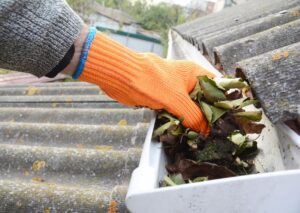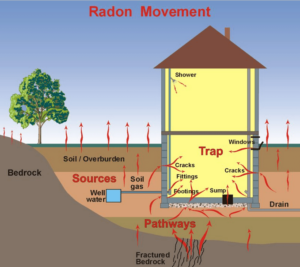Disasters such as hurricanes, tornadoes, mudslides, and winter storms create property damage that needs to be cleaned up. Licensed professionals like Utah Disaster Cleanup must do these repairs. However, volunteers can help with cleanup efforts and must know the work hazards.
These hazards include power lines downed on flooded roads, contaminated water, and carbon monoxide poisoning.

Cleanliness is one of the most important aspects of disaster relief. It preserves dignity, facilitates access to essential supplies, and contributes to the overall recovery of affected communities. Without proper hygiene, people are more likely to suffer from diseases such as typhoid, dysentery, and diarrhea. This can be deadly, especially during a disaster when access to clean water and medical aid is limited.
Clean environments are also crucial for preserving affected individuals’ dignity and mental well-being. This is especially true for those who have to relocate from their homes to temporary shelters, which often become overcrowded and unhygienic due to the lack of infrastructure. Cleanliness is also necessary for distributing basic supplies, such as food and medicine. Relief workers can efficiently distribute these supplies cleanly and ensure they reach the intended recipients without contamination or health risks.
However, it isn’t easy to maintain cleanliness in a disaster-stricken area because of the complexity and scale of the cleanup operations. For example, Superfund sites can span dozens of square miles and contain multiple contaminants, making it challenging to manage cleanup goals and actions. Moreover, the location of landfills for waste disposal is not always clear. Therefore, a more holistic approach to disaster cleaning that integrates social and environmental concerns is required.
Disaster cleanup can present a unique set of hazards to workers. These hazards range from bacteria and mold growth to damaged structures, exposed wiring, and downed power lines. Employers must assess the dangers at each disaster site to identify and protect their employees. The following four tips will help ensure a safe environment as employees and volunteers work to restore homes, businesses, and communities after disasters.
It is important to wear sturdy shoes when cleaning up after a disaster. If possible, avoid walking on weakened flooring or stairs. Carrying a flashlight and checking for structural damage before entering a building or house is also a good idea. If you are still determining whether a building is safe, inspect it by a professional before working inside.
If you are working with chainsaws or other powerful tools, ensure you are properly trained and have the proper equipment for the job. Always wear eye protection and use appropriate clothing. If you work outdoors, be aware of changing weather conditions and watch for flash floods. Be sure to follow all local and government-issued disaster cleanup and recovery guidelines.
Disasters happen when we least expect them, and they can leave behind various dangerous materials that pose health risks to the people who work in their aftermath. Toxic fumes from flooded buildings or chemicals used to clean up after a fire can be dangerous. The toxins can disperse in the air and become aerosolized, so it is important to wear adequate respiratory protection.
In addition, it is important to be vigilant about contaminated water and gas leaks. If you notice these issues, wait to enter the area and contact a local utility company immediately. Injuries and illnesses can occur anytime during disaster recovery, so it is important to be prepared.
Disaster cleanup is a stressful and difficult task. The physical and emotional exhaustion can take a toll on workers. In addition, they must deal with the stress of losing their homes or other valuable possessions to disaster. To minimize the effects of these factors, it is a good idea to seek psychological assistance as needed.
Natural disasters such as floods, fires, mudslides, tornadoes, earthquakes, and winter storms can damage property. Often, the damage is extensive and requires professional restoration equipment to clean up. Disaster cleanup professionals need several critical pieces of equipment to get the job done right.
In addition to having general cleaning supplies, a disaster cleanup business must have specialized tools and heavy equipment. These include portable generators, power saws, ladders, and vehicles to move debris and other hazardous materials. The company must also have detailed blueprints and additional information about the site, including where gas pipelines are located. This is important to determine the safety risks involved in the job and to take appropriate precautions.
Workers need personal protective equipment, including masks and gloves. Hazards to be protected against include bacteria and other biohazards, contaminated water, mildew, mold, and debris. In addition, employees may be exposed to electrical hazards, downed power lines, carbon monoxide, tree trimming, and risky structures.
Insurance companies and homeowners want professional restoration and disaster cleanup services that provide fast response times, accurate estimates, and quality work. They expect the disaster cleanup company to save as many of their belongings as possible and do so without disruption. That’s what Disaster Cleanup delivers. Their team is highly qualified and experienced in the restoration industry. They have the training and expertise to deal with all types of damage from floods, fires, sewage accidents, and structural damage due to earthquakes. They are fully licensed, insured, and bonded.
Communication is essential in disaster recovery, particularly during the early stages. Effective communication allows emergency responders to share information with other agencies and stakeholders and coordinate their efforts. It also helps disseminate alerts and warnings to individuals in the affected area. This is critical for saving lives and minimizing damage to communities. Communication infrastructure should include a range of technologies, including phone networks and internet service providers. It should also be resilient, with backup options in case of failure.
Disasters can significantly affect a company’s business operations, and it is important to communicate with employees throughout the recovery process. Managers and leaders should communicate with employees through multiple channels about the status of the disaster, including office hours and work schedules. They should also provide a clear path to return to normal operation after the disaster has subsided.
It is also important to consider the physical and emotional impact of the disaster on workers. Long hours of cleaning up debris and providing support can take a toll on their health. Ideally, employees should be trained in disaster response to prepare for and handle the stress of a disaster. This can be done through training courses or online learning programs.
Effective communication during a disaster is important for coordinating response teams, disseminating alerts and warnings, and communicating with affected individuals. Maintaining public trust and reducing panic by providing official updates and dispelling rumors is also important. Additionally, it is important to have reliable communication channels for disseminating information and communicating with vulnerable populations, such as children and older adults.
In addition, developing a communication plan in advance and testing it is necessary. The strategy should be updated frequently to reflect new information and circumstances. Using a project management software program, such as ClickUp, to create a visual timeline can help organize and prioritize communications with various stakeholder groups. Setting recurring tasks in ClickUp to ensure that communication with these stakeholders is remembered is also helpful. This will prevent communication breakdowns and ensure that all stakeholders are informed of the progress towards disaster recovery.
Once the restoration is complete, your home will be restored to its original condition. Any damaged materials will be repaired or replaced, and any contaminated areas will be cleaned and disinfected. This will help to prevent future problems such as mold and mildew growth, structural damage, and other health hazards.
While you can do some water damage restoration yourself, leaving the bigger jobs to the professionals is always best. If you are dealing with significant flooding, a serious leak, or a large amount of sewage, it is essential to call in the experts to avoid further damage and potential health risks. You should only attempt a DIY water damage restoration if it is safe to do so and if you are experienced with such projects. It is also important to have the proper equipment, such as a wet/dry shop vac and dehumidifiers, to help you with the process.



